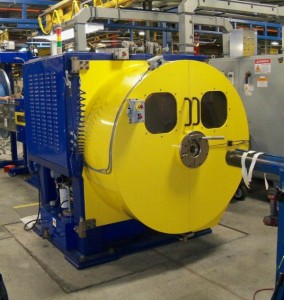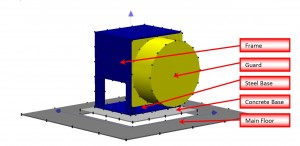Vibration transmitters are commonly used in asset reliability programs. They provide a cost effective means of continuously monitoring the vibration level of the asset. Vibration transmitters are not machinery protection devices because they do not provide a direct means of shut down. But they do provide information for Predictive Maintenance and information to plant control systems which can shut down the asset upon a high vibration.
Today’s vibration transmitters offer many more monitoring options than the past. The output of the transmitter can be selected to be RMS, Peak or True Peak and in units of acceleration (g’s) or velocity (IPS). Most 4-20 mA sensor manufactures, including Wilcoxon offer many different types of sensor ranges and measurement calculations.
How do vibration transmitters calculate these measurement values?
Meter circuits (vibration transmitters) use detectors to establish a level for an AC signal. Average detectors were used in the first simple voltmeters. To be more representative of the power in the signal, RMS meters were developed. When we lived in the world of analog voltmeters, it was important to know if the meter was average responding or RMS responding and how the meter function was calibrated.
All this ‘knowledge’ is now buried inside digital meters and is rarely talked about. However, there are some important distinctions that need to be discussed. Cheap RMS meters continue to use average detectors calibrated for RMS circuits. This was fine when meters were limited to measuring AC line voltage because everything in the US was 110 volts/60 Hz.
However, in our world of dynamic waveforms (vibration signals), no longer are we limited to just 60 Hz signals. Vibration signals run the gamut of ~0.5 Hz to 10,000 Hz+. The early RMS detectors were limited in their frequency range to a few hundred Hertz. Because of their limited frequency range, true RMS detectors with a wider frequency range were developed to accommodate the growing requirement of vibration signal analysis.
With the wider frequency range a new problem developed. How could a meter that was responsive to 0.5 Hz signals, 2 seconds in length, co-exist with signals of 10,000 Hz, 0.0001 seconds in length? If the detector followed the 10,000 Hz signal it would be very fast responding but would misrepresent the information from the 0.5 Hz signal. If the meter was slowed down to accurately report the value at 0.5 Hz, whatever was happening at 10,000 Hz would be completely missed. To solve this problem a compromise was reached in engineering circles; signals with wide bandwidths (vibration), would have a 1 second averaging time as it most accurately represents the input signal.
Therefore, the output from a 4-20 mA RMS vibration transmitter represents some level over a fixed time period, usually 1 second. What is the process of RMS, root-mean-square calculations? In this calculation processes, the raw AC vibration signal is 1) electronically squared, 2) a mean value is established over a time period and 3) the square root of this mean value is extracted. Unlike some processes, such as Fourier transforms which is a block process, the RMS process is continuous, always updating the value as new data is measured.
Bottom line… Changing the time period of the mean calculation from one second to something else will change the 4-20 mA sensor output from RMS, to Peak or to True-Peak.
Now that you know there is a difference in the method the sensor circuit process the signal, you should also know there is a definite difference in their application. In the vibration field most users are very familiar with ‘peak values’. Peak values are easy to identify if you have a time waveform to view. Since we do not have that luxury in a 4-20 mA sensor, the transmitter output must somehow represent the peak value of the waveform. In these sensors most often the averaging time, (the mean calculation) of the RMS detector is shortened. This allows the circuit to closely follow the peak value of an incoming waveform. A reasonable estimate of the averaging time of a peak detector, as used by most brands, would be in the neighborhood of 100 milliseconds. This is a 10 times faster response than the industry standard RMS vibration transmitter.
For ‘normal’ predictive maintenance monitoring against standards such as ISO 10816, the Wilcoxon ‘peak’ 4-20 mA sensor PC421VP-XX is recommended. This is a true RMS responding sensor calibrated for ‘peak’ levels and very effective in overall vibration monitoring.
The Wilcoxon ‘true peak’ detector uses an averaging time of around 1 millisecond. This is one hundred times faster than the typical ‘peak’ detector vibration transmitter. In short, Wilcoxon ‘true peak’ vibration transmitters are very effective in identifying early stage roller bearing wear or gear mesh problems. Other applications include reciprocating engines and compressor where impacts are continually present. The Wilcoxon True Peak vibration sensor is PC421ATP-XX.
Next time you consider installing vibration sensors, remember there is a difference in their design, their purpose and the company that builds them. Wilcoxon offers superior products, superior product application support and a Life Time Warranty.

